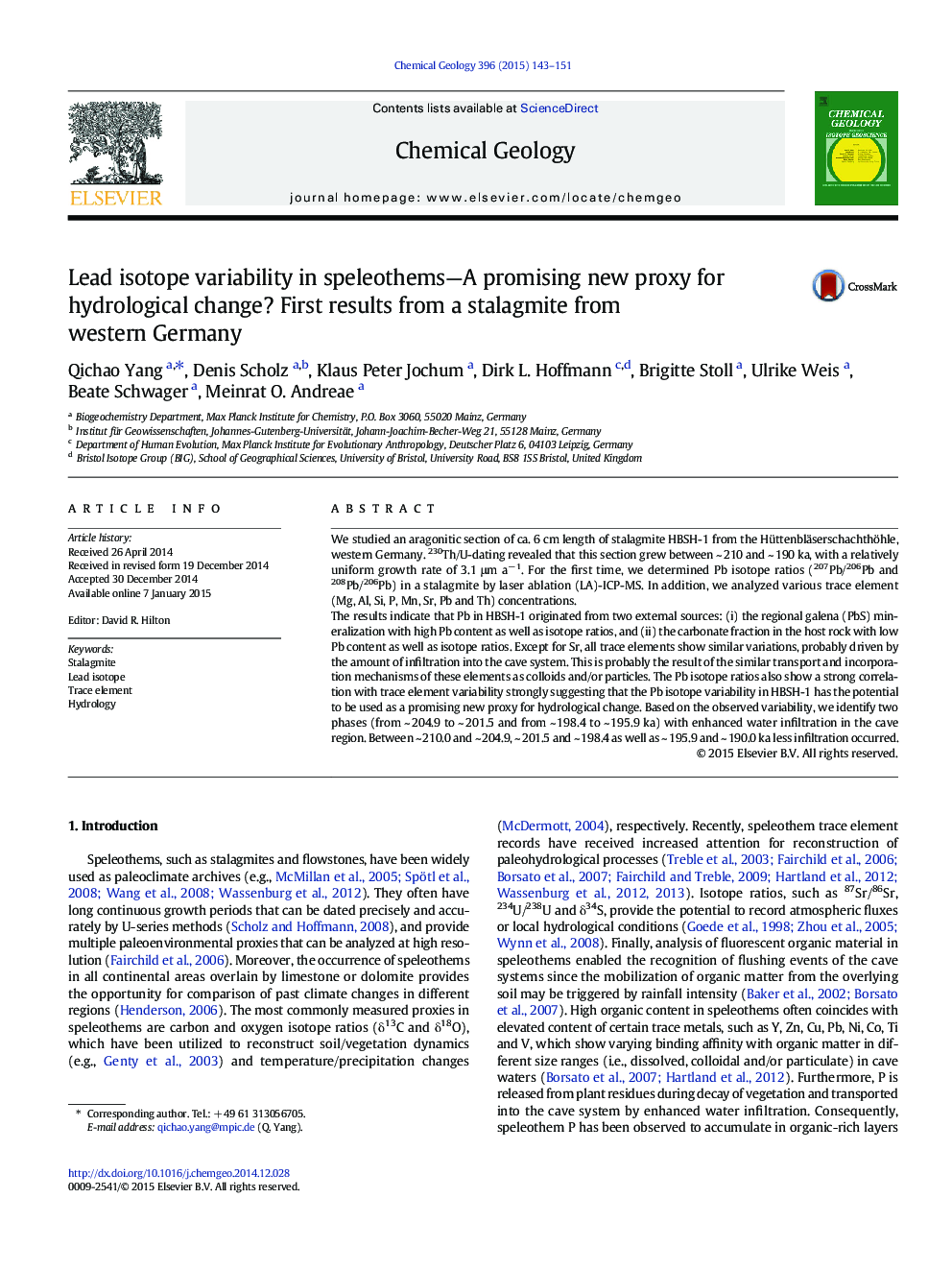| کد مقاله | کد نشریه | سال انتشار | مقاله انگلیسی | نسخه تمام متن |
|---|---|---|---|---|
| 6436510 | 1637577 | 2015 | 9 صفحه PDF | دانلود رایگان |

- We measured Pb isotope ratios and element abundances in a stalagmite by LA-ICP-MS.
- Pb isotope ratios would suggest a Pb mixing from two external sources.
- Correlation between concentrations and Pb isotope ratios may reflect infiltration.
We studied an aragonitic section of ca. 6 cm length of stalagmite HBSH-1 from the Hüttenbläserschachthöhle, western Germany. 230Th/U-dating revealed that this section grew between ~ 210 and ~ 190 ka, with a relatively uniform growth rate of 3.1 μm aâ 1. For the first time, we determined Pb isotope ratios (207Pb/206Pb and 208Pb/206Pb) in a stalagmite by laser ablation (LA)-ICP-MS. In addition, we analyzed various trace element (Mg, Al, Si, P, Mn, Sr, Pb and Th) concentrations.The results indicate that Pb in HBSH-1 originated from two external sources: (i) the regional galena (PbS) mineralization with high Pb content as well as isotope ratios, and (ii) the carbonate fraction in the host rock with low Pb content as well as isotope ratios. Except for Sr, all trace elements show similar variations, probably driven by the amount of infiltration into the cave system. This is probably the result of the similar transport and incorporation mechanisms of these elements as colloids and/or particles. The Pb isotope ratios also show a strong correlation with trace element variability strongly suggesting that the Pb isotope variability in HBSH-1 has the potential to be used as a promising new proxy for hydrological change. Based on the observed variability, we identify two phases (from ~ 204.9 to ~ 201.5 and from ~ 198.4 to ~ 195.9 ka) with enhanced water infiltration in the cave region. Between ~ 210.0 and ~ 204.9, ~ 201.5 and ~ 198.4 as well as ~ 195.9 and ~ 190.0 ka less infiltration occurred.
Journal: Chemical Geology - Volume 396, 9 March 2015, Pages 143-151